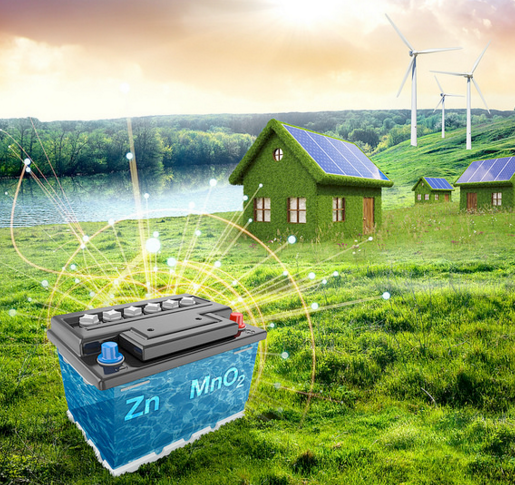Scientists working on analyzing energy flows in prototype zinc-manganese batteries have discovered a way to make these power cells more reliable, with many more recharge cycles than the lead-acid car battery, while costing about the same to produce. The team claims the new battery could become an inexpensive, ecologically-sound alternative for storing energy from renewable sources and a solution for storing excess energy from the power grid.
It was while working at the Department of Energy’s Pacific Northwest National Laboratory (PNNL) when the creators found a way to approach the reliability problems of zinc-manganese batteries that were not just cheap, but easy to make from abundant materials, but which would also fail after a few charge cycles.

A zinc-manganese power unit. Image source: PNNL.org.
“The idea of a rechargeable zinc-manganese battery isn't new; researchers have been studying them as an inexpensive, safe alternative to lithium-ion batteries since the late 1990s,” said PNNL Laboratory Fellow, Jun Liu. “But these batteries usually stop working after just a few charges. Our research suggests these failures could have occurred because we failed to control chemical equilibrium in rechargeable zinc-manganese energy storage systems.”
By collaborating with researchers at the University of Washington, Liu and his team began by investigating rechargeable zinc-manganese batteries as inexpensive alternatives to lead-acid batteries due to the cheap and plentiful supplies of zinc and manganese. The PNNL researchers hoped to produce a better-performing, longer-lasting, Zn-Mn battery by seeing if it was possible to overcome earlier failures by other scientists.
Years of study on lithium-ion (Li-ion) batteries and their characteristics had many researchers believing that the behavior of lithium ions in those batteries would be replicated in the Zn-Mn cells. To store and release energy in Li-ion cells, intercalation (a process where lithium ions move in and out of microscopic spaces in between the atoms of the cell’s two electrodes) occurs.
Surprisingly, tests showed the PNNL team that the device being analyzed underwent a different process. Where a Li-ion battery would move its ions in the charging process, the Zn-Mn version was subject to a reversible chemical reaction that transformed the active materials in the electrodes into a completely different substance, zinc hydroxyl sulfate.
It was then that the team realized something different must have been going on in the Zn-Mn unit they built. They believed the Zn-Mn battery was acting more like a lead-acid one. Next, they decided to bring out the big guns in the form of X-ray diffraction, nuclear magnetic resonance imaging (MRI), and transmission electron microscopy.
Tests showed that the battery’s manganese oxide positive anode was reversibly reacting with protons from the water-based electrolyte in which it was immersed, to create the zinc hydroxyl sulfate. This new material coated the electrode, and the power flow and cycle capabilities were reduced.
With their new-found knowledge, the team searched for ways to reduce this process. After realizing chemicals to be the culprit, they figured out that the pace at which the manganese was being transformed could be reduced by increasing the manganese concentration in the electrolyte before applying power. It worked.
According to the researchers, the tiny test battery achieved a storage capacity of 285 mAh per gram of manganese oxide over 5,000 cycles, with 92% of its initial storage capacity retained.
With plans to carry out their analysis of how the zinc-manganese oxide battery operates, the team of researchers hopes to increase their knowledge of the reactions while tinkering with the electrolyte concentrations to try to wring out as much efficiency as possible.
Source: PNNL.gov
Advertisement
Learn more about Electronic Products Magazine





